Boreal Chickadees In Algonquin Provincial Park
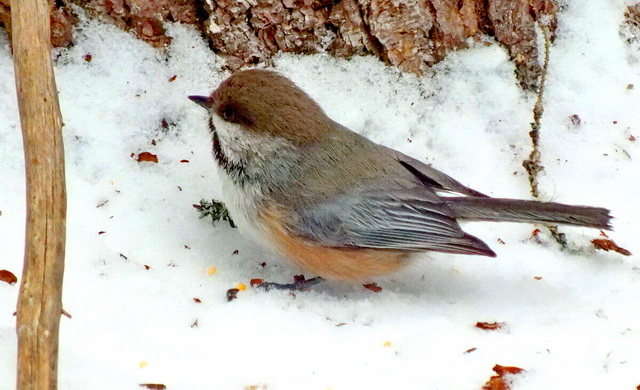
One winter day, Bob and I drove into Algonquin Provincial Park, in Ontario, with plans to walk the Spruce Bog Boardwalk Trail. It is there that we sighted numerous Boreal Chickadees.
The Spruce Bog Boardwalk Trail is located at kilometer 42.5 along Highway 60 after entering Algonquin Park from the West Gate.
Bob and I found the trail, which departs from the roadside parking lot, to be very solid underfoot. The snow was hard-packed from frequent use by other hikers and bird watchers, and within minutes, we were in the thick spruce forest.
Alongside the trail, a feeding station has been provided to entice birds within close range for optimum observation of their coloring and habits. As we approached the bird feeder, numerous Boreal Chickadees, a Red-breasted Nuthatch and both a female and male Hairy Woodpecker were all frantically fighting for their share of the spoils.
We were able to distinguish the Boreal Chickadee from the more familiar Black-capped Chickadee because of the brownish olive back and brown crown. In general, the flanks of a Boreal Chickadee are more reddish, and the face displays more grey with smaller patches of white on the cheeks.
Last week, in between the monster snowstorms that blew through Ontario, I snapped a few photos of the Black-capped Chickadees in my own backyard.
The differences really stand out when the two species of birds are shown side by side.
As this Boreal Chickadee worked for a piece of suet, I was conscious of several others rescuing tidbits that lay below on the snow. These birds normally forage on conifer branches or probe into the bark of trees for insects and seeds that are sometimes stored for later consumption. I get a kick out of watching the Black-capped Chickadees in my backyard because they have favorite hiding spots for their precious seeds. This photograph really showcases the Boreal Chickadee’s brown cap.
This video that Bob filmed features the Boreal Chickadees as they flit from branch to branch as they scan the snow for fallen bits of suet and seeds.
Boreal Chickadees are permanent residents of boreal forests. They occur almost entirely in coniferous forests, but are found to a lesser extent in mixed woodlands. The forest habitats utilized by these chickadees are often wet and generally composed of spruce and balsam fir, which explains why we find them at this particular location in Algonquin Provincial Park.
So before taking our leave of the parking lot, we circled back one more time to the area of the bird feeder where the Boreal Chickadees were still hard at it, feeding up on seeds and suet in preparation for the cold winter night ahead.
Frame To Frame – Bob and Jean

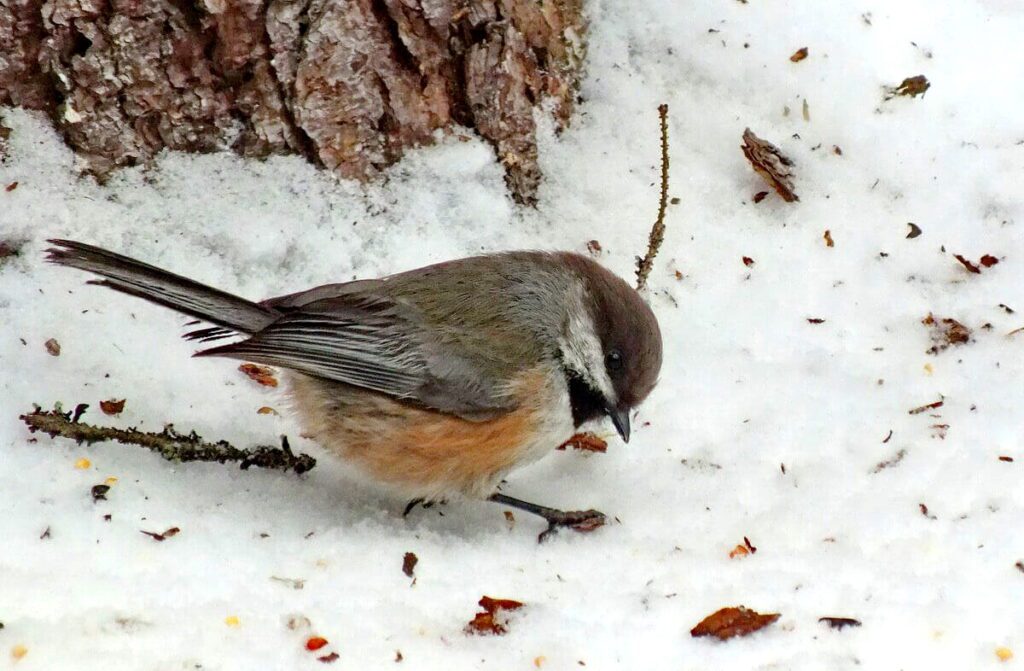
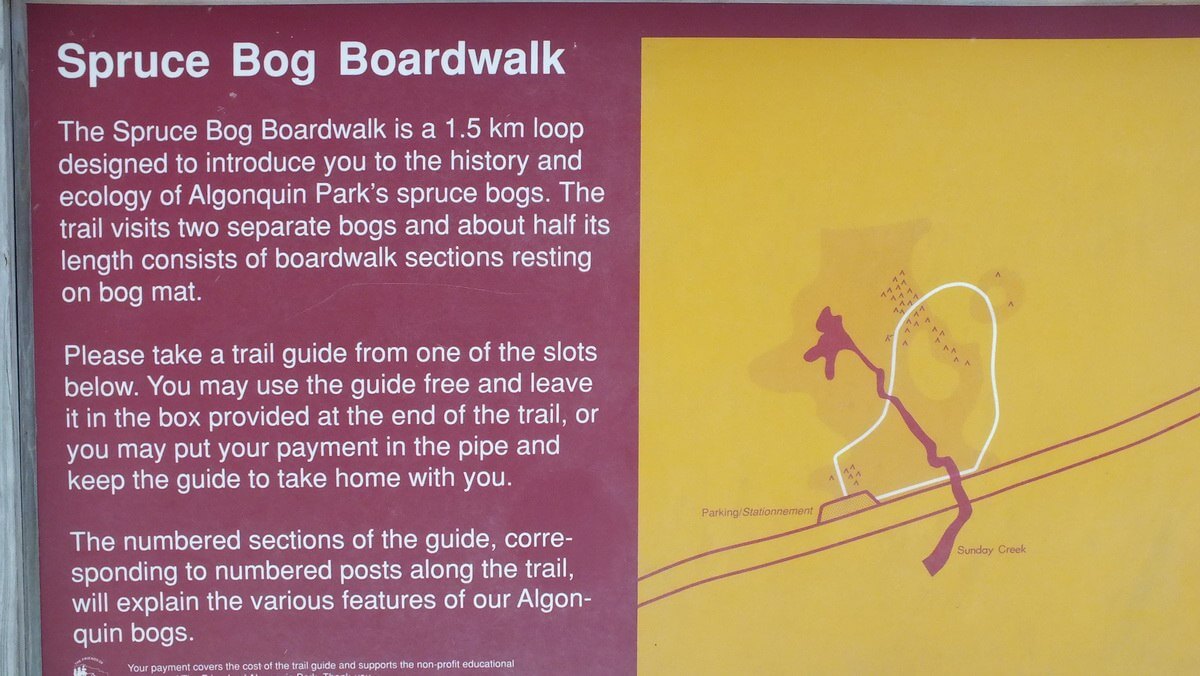

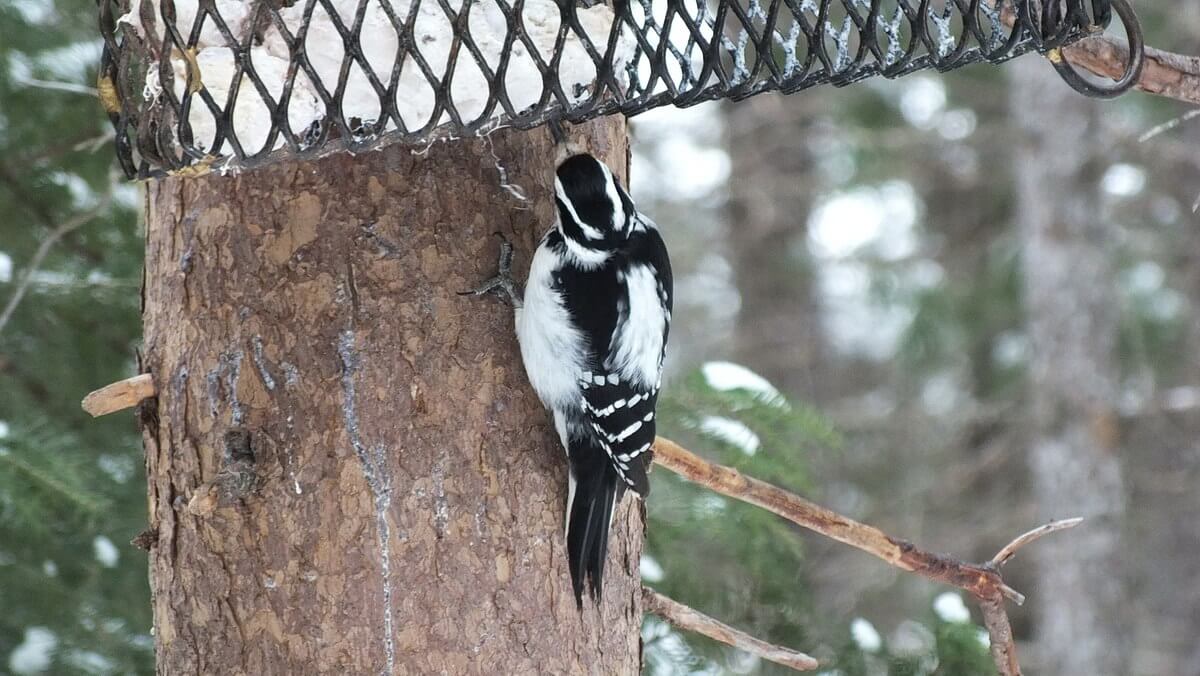
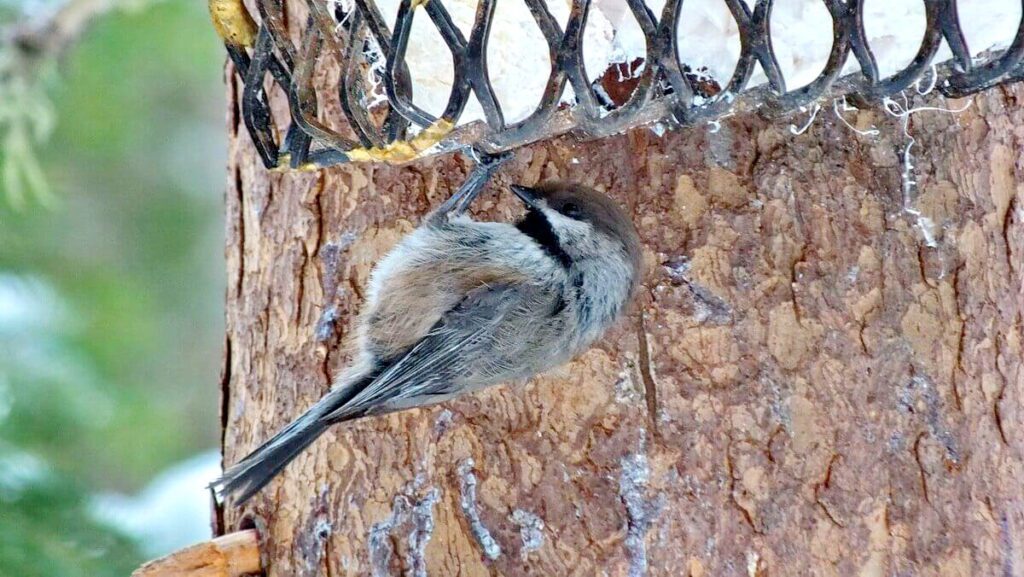
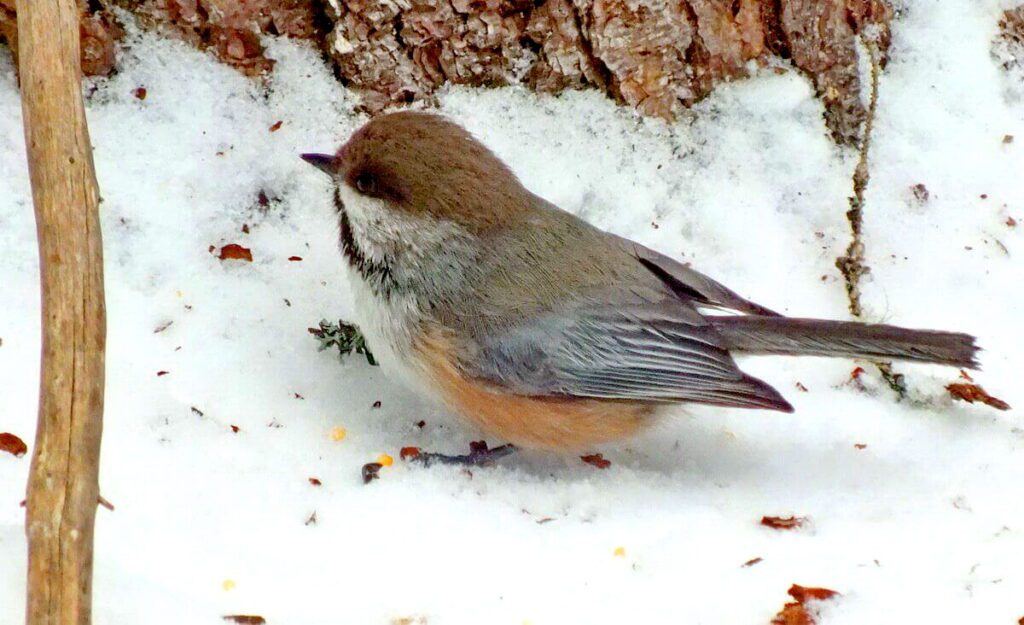

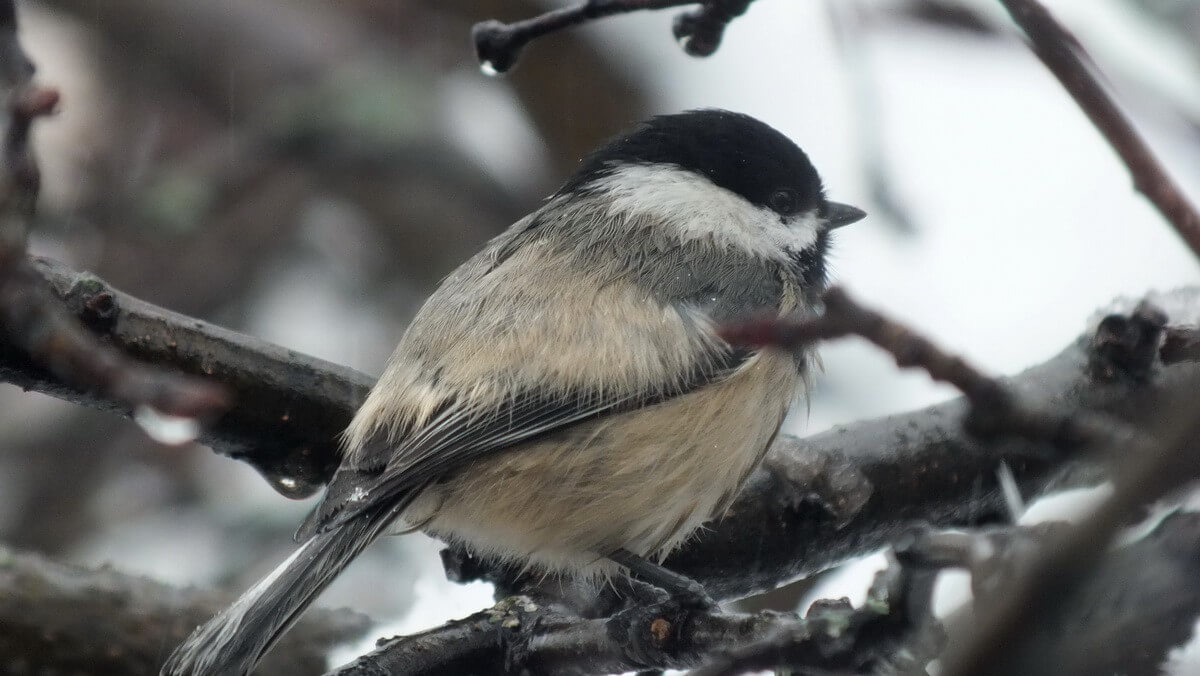
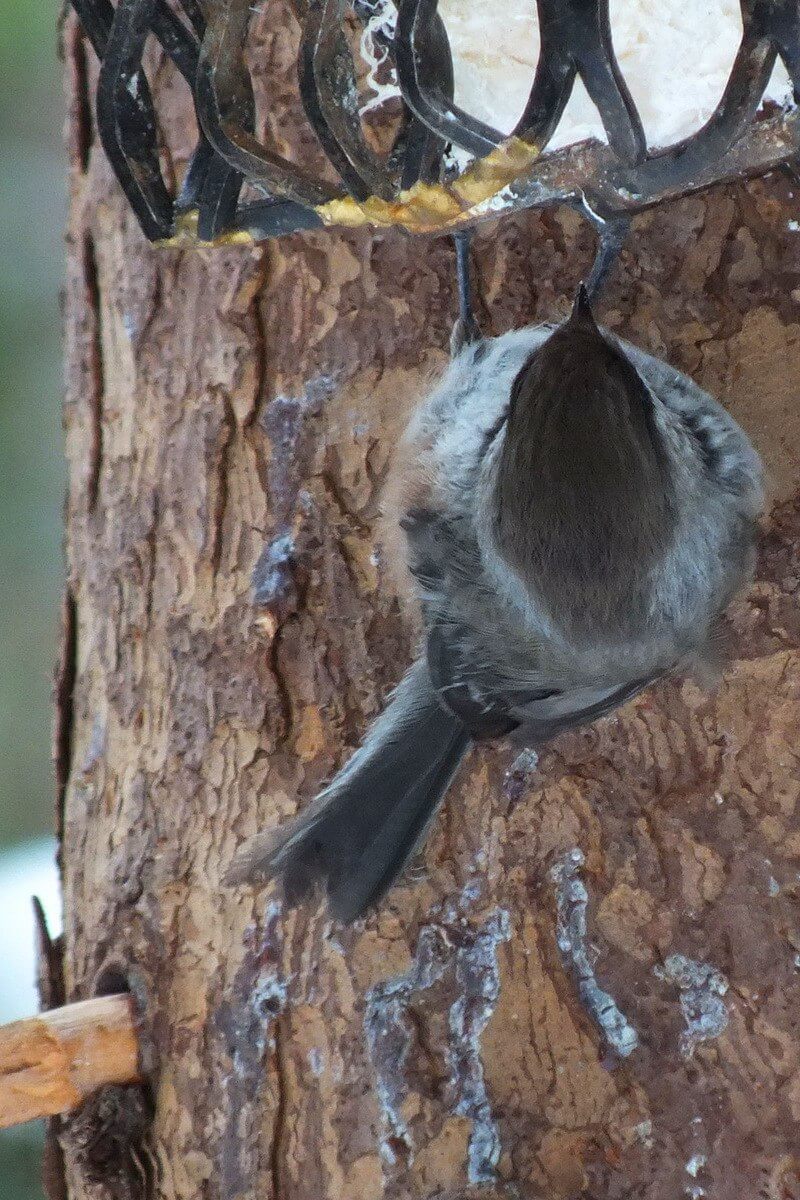


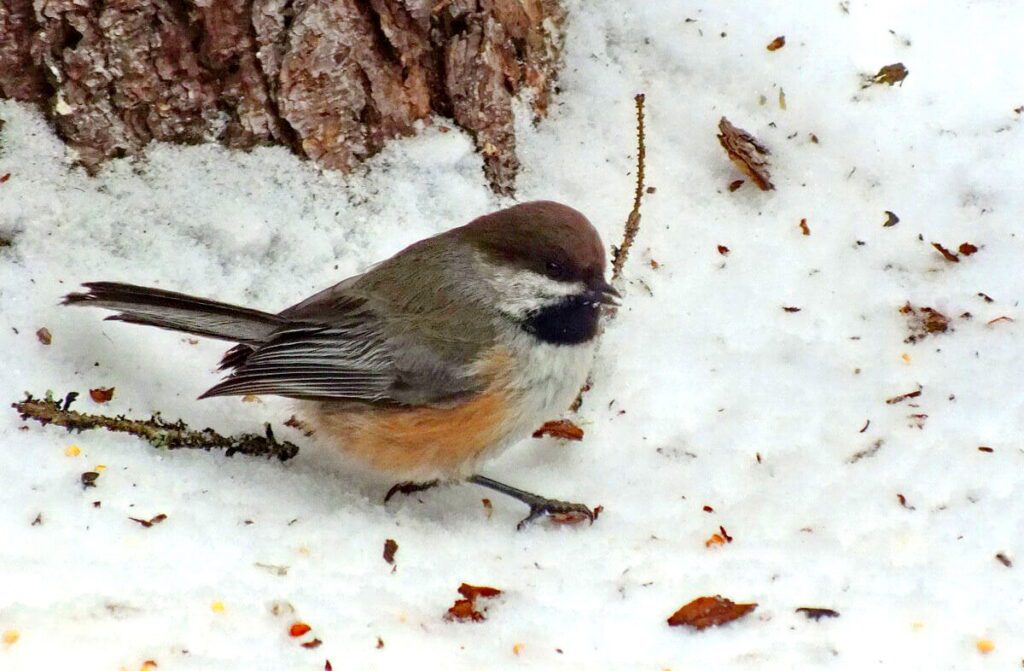
They usually stay in the same place all year round. They are famous for taking a former woodpecker nesting cavity, and making it their own for nesting. They are also famous for caching seeds. Watch one take a sunflower seed from your feeder, and flying off to stick in a crack of a nearby tree.
thanks for your input. Birds are so entertaining to watch, aren’t they?
One of myfavourite birds is the blackcapped chickadee. They are always at my feeder. One winter, after a snow storm, I was able to feed two of them from my hand. What a thrill. Thank you for the pictures of the Boreal Chickadee.
thanks, Bonnie. I’m not sure where you live, but if it is in the Toronto area, you might enjoy a visit to one of the conservation areas near Whitby or Oshawa. There, tons of Black-capped Chickadees, as well as nuthatches and even woodpeckers, will eat out of your hand if you have an ample supply of birdseed. If you are hiking on those trails, the chickadees will actually follow you along, always encouraging you to give them more food. They are so cute!